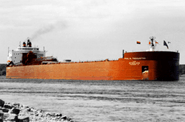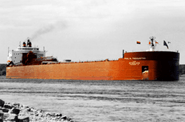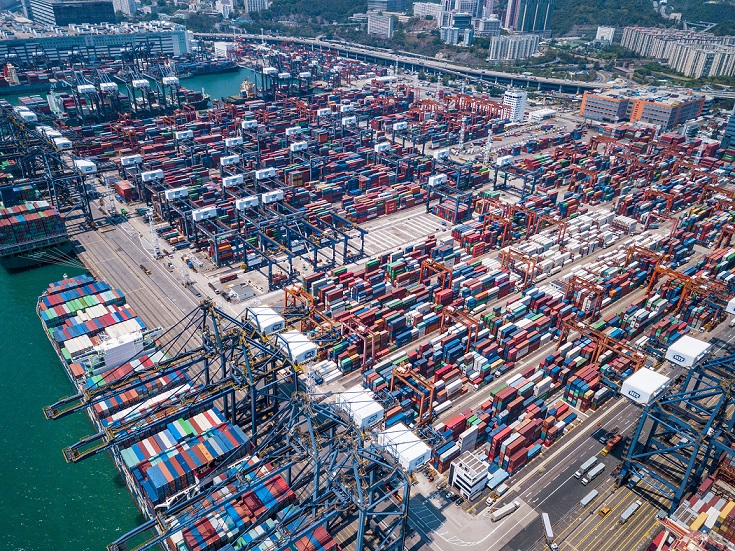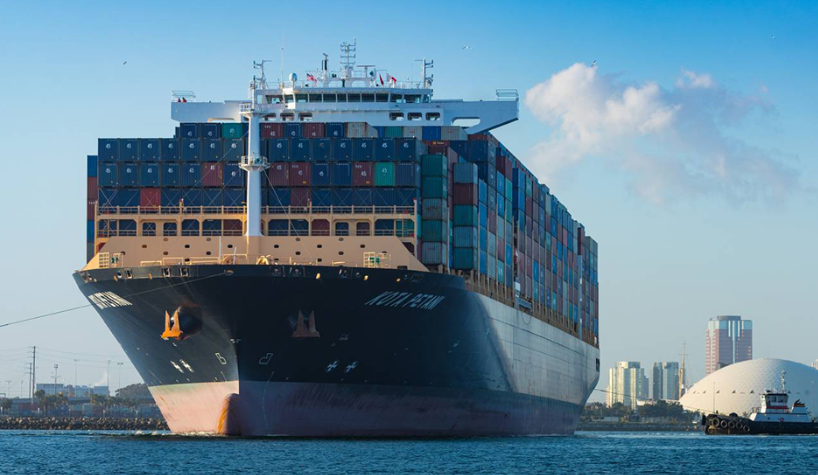Shipping and Logistics

Ore, Steel Rock Great Lakes-Seaway Tons Higher
Written by Michael Cowden
September 15, 2021
Tonnage moved across the Great Lakes-St. Lawrence Seaway has risen significantly thanks to a strong showing from vessels carrying iron ore and steel.
Total cargo stood at 22.8 million tons (20.7 million metric tonnes) through the end of August – the midpoint of the Great Lakes shipping season – up more than 5% from 21.7 million tons in the same period last year.
Iron and steel (+95%), coke (+69%), and steel slabs (+82%) recorded much higher gains.
“Multiple vessels loaded with an array of steel products from over a dozen different countries arrived at U.S. Great Lakes ports in August, while iron ore exports to high-demand countries including China, Japan and South Korea saw a 29% tonnage increase compared to this time last year,” said Craig H. Middlebrook, deputy administrator of the Great Lakes St. Lawrence Seaway Development Corp.
Below are some highlights:
• The Cleveland-Cliffs hot-briquetted iron (HBI) plant in Toledo, Ohio, drove volumes at the Toledo-Lucas County Port Authority above six million tons for the first time since 2011. “The additional iron ore tonnage attributed to the Cleveland-Cliffs HBI operation has really helped elevate the port to the next level, and we continue to focus on updating our infrastructure to accommodate additional throughput,” said Joe Cappel, vice president of business development for the Toledo-Lucas County Port Authority. HBI is reduced from iron ore produced at Cliffs’ mines further north along the Great Lakes basin.
• The Ports of Indiana-Burns Harbor, along Lake Michigan, recorded a 22.5% increase in tonnage this August versus last. “August was a big month for project cargo and steel uploads,” Port Director Ryan McCoy said.
• On Lake Superior, the Port of Duluth-Superior in Minnesota recorded an iron ore “float” of 2.3 million tons in August, bringing year-to-date volumes to 11.9 million tons – or 13.2% above the average of the last five shipping seasons. “Amidst ongoing disruption in the global supply chain, the Great Lakes-St. Lawrence Seaway System has been, by comparison, an oasis of consistency so far in 2021,” said Deb DeLuca, executive director of the Duluth Seaway Port Authority.
• And it wasn’t just imports and ore shipments among domestic mills that boosted tonnage on the Great Lakes and the St. Lawrence – so too did iron ore exports. Minnesota ports launched 24 Lakers in August – a 50% increase versus the month prior – loaded with ore to the Port of Quebec in Canada, where the raw material was transhipped primarily to destinations in Asia.
Lakers are designed to transit the region’s sometimes narrow locks and are smaller than ocean-going “salties” that carry material to destinations abroad. The Great Lakes and St. Lawrence close to shipping in the winter because of ice.
The Great Lakes-St Lawrence Seaway system comprises eight U.S. states and two Canadian provinces. The region would be the third largest economy in the world if it were its own country, according to the Great Lakes Seaway Partnership.
By Michael Cowden, Michael@SteelMarketUpdate.com

Michael Cowden
Read more from Michael CowdenLatest in Shipping and Logistics

AMU: Shippers oppose Union Pacific-Norfolk Southern deal
Meanwhile, the nation’s largest rail union said they supported the tie-up between Union Pacific and Norfolk Southern once Union Pacific agreed to secure union jobs.

US Great Lakes iron ore cargoes down notably through May
The Lake Carriers' Association reported a considerable decline in monthly iron ore shipments from US ports on the Great Lakes.

Wittbecker: West Coast port congestion
What's going on in West Coast ports?

Wittbecker: Mexico invests in port capacity despite US tariff troubles
The Mexican government aims to transform Manzanillo into the largest seaport in Latin America, capable of processing some 10 million TEU (20-foot equivalent units) per year by 2030. It is already Mexico's largest port and the third largest in Latin America, handling nearly 4 million 20-foot containers in 2024.

Wittbecker on Aluminum: When do the tariffs reach Main Street?
Containers sailing from China in April are down 15%-20% and Hapag Lloyd says their future bookings transpacific are down 30%.

